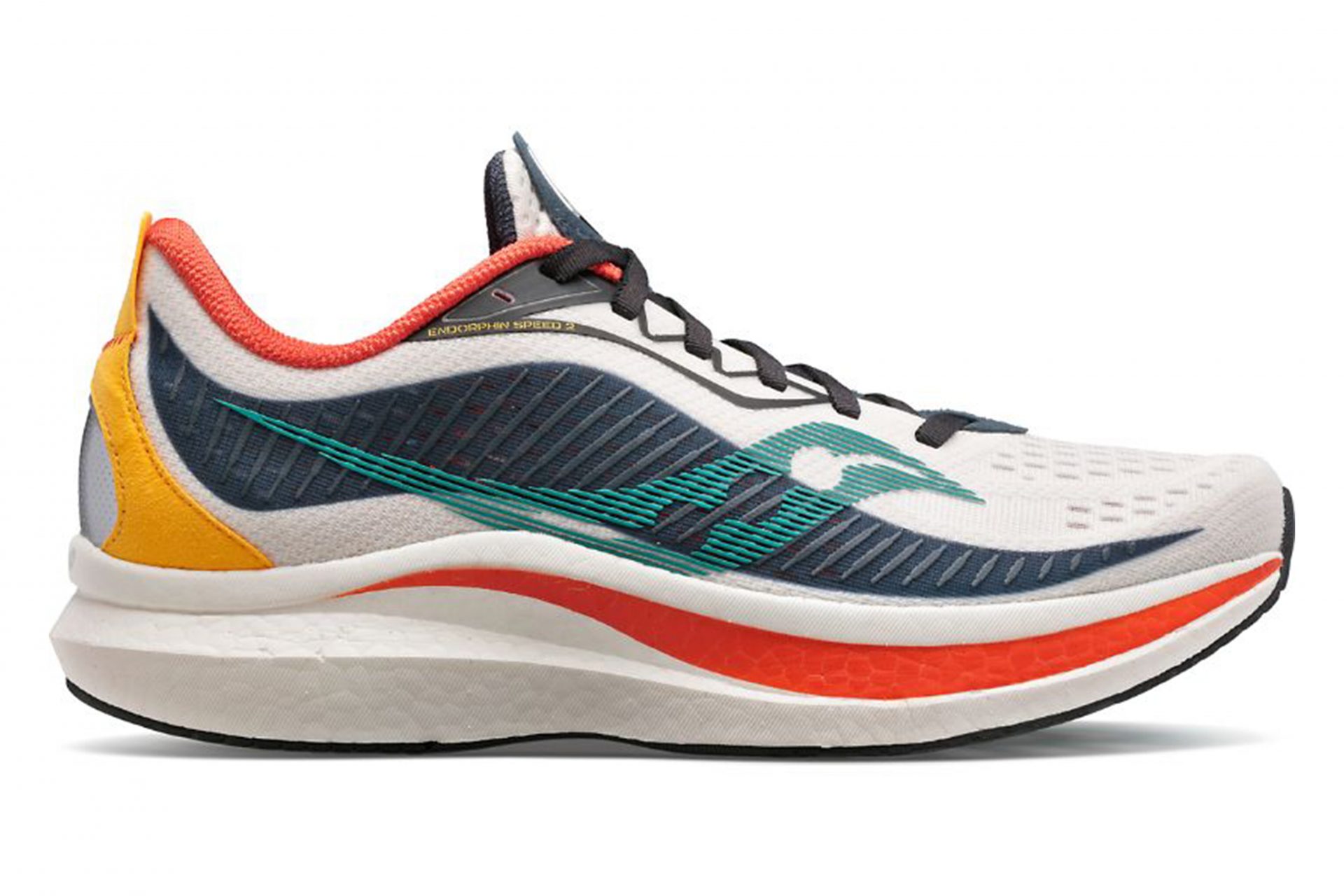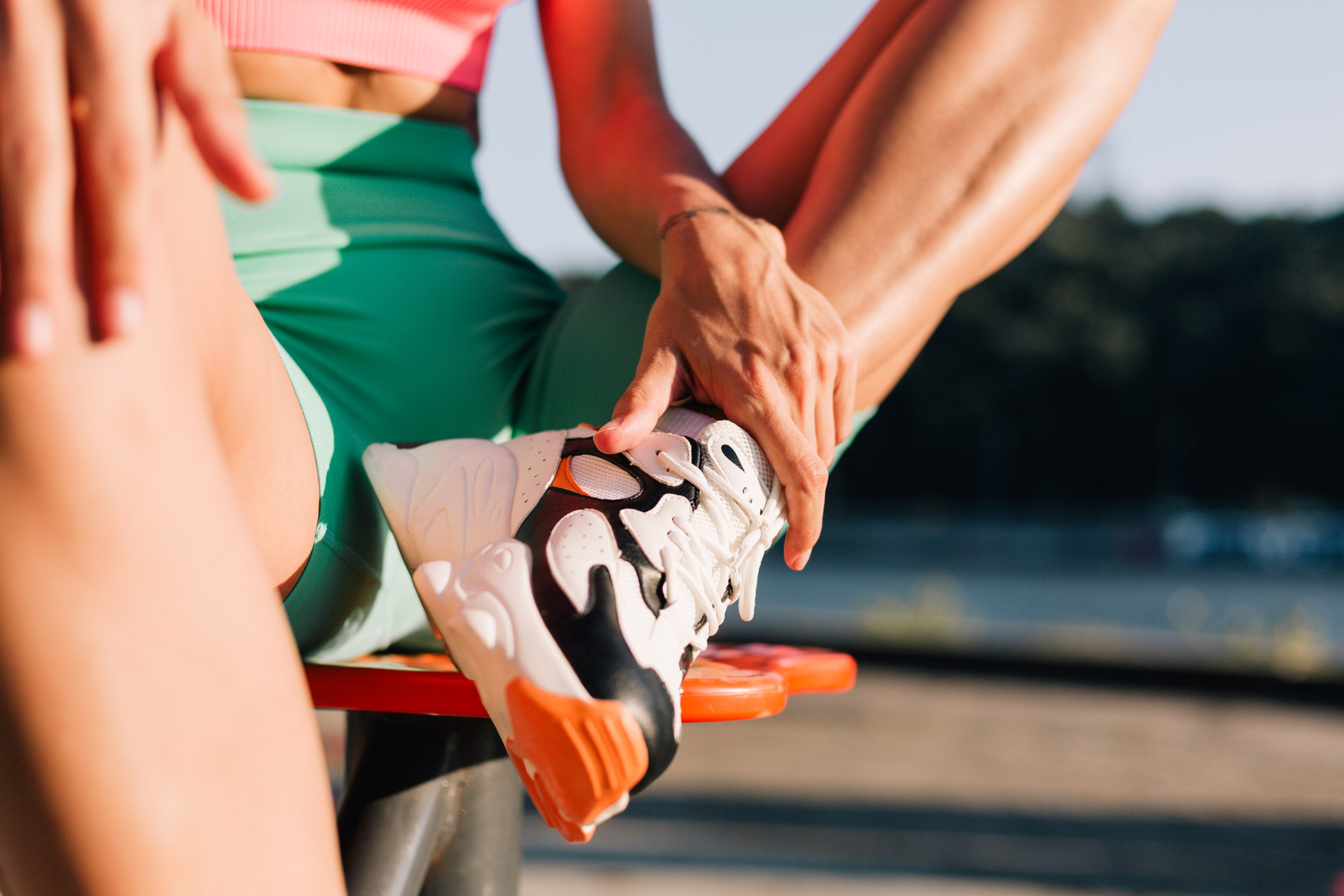With every new season, new running shoes are constantly being introduced touting the latest technologies to improve your form and your pace. But every foot is different and each person’s movement patterns are almost as unique to you as your fingerprints. Without the right kind of support, you could be at risk of getting heel pain from running or an overuse injury from excessive loading.

Running remains a popular fitness and recreational sport despite a predicted injury rate of up to 56 per cent among runners each year. Overuse injuries, which are caused by the high loading that comes with repetitive movement, account for more than half of all injuries. To try and address these problems, the footwear industry has created a slew of shoe modifications, aimed at preventing and treating painful foot and ankle conditions.
Heel pain is a common complaint that can be caused by a variety of conditions, including plantar fasciitis and Achilles tendinitis. As such, running shoe companies conduct research and development to reduce the incidence of lower extremity injuries and to provide additional support to the heel or other parts of the foot. While the majority of shoe gear research focuses on runners, many of these technologies may apply to non-athletes and athletes in other sports.
An overuse injury is caused by a variety of factors. Abnormal mechanics may be one example and it refers to dysfunctions or abnormalities in movement that cause the body to inadequately respond to kinetic forces. These forces are generated through walking, running and jumping. Over time, abnormal mechanics increase an individual’s risk of injury.
Both the magnitude and rate of foot pronation are contributing factors in overuse running injuries when it comes to abnormal movement patterns.
Overuse injuries in runners are also linked to excessive musculoskeletal loading. These include both the magnitude of impact forces stemming from the rapid collision of the foot with the ground, or the rate of impact loading. Impact loading, as its name suggests, refers to the single force of impact generated by each step. Sports shoe manufacturers, in our opinion, have developed several technologies aimed at optimizing running mechanics, specifically, controlling pronation, reducing impact forces, and reducing the rate of impact loading.
While innovation is generally beneficial, we think many of the changes in running shoe gear technology are driven by commercial and financial goals rather than science. Effective studies on the relationship between shoe gear and lower extremity injuries require a large study population. Moreover, it is very difficult to separate the many compounding variables specific to each individual associated with injury risk, to adequately assess the effectiveness.

Thanks to the advancement of running gait analysis modalities, researchers have now begun to investigate the impact of shoe gear on biomechanical parameters such as foot strike position, ground reaction forces, stride length, loading rates, hindfoot position, and tibia rotation. By examining the specific effect of shoe gear on these biomechanical factors, researchers can better infer the potential effect of shoe gear on running injuries, caused by biomechanical factors.
Shoe Technologies, Biomechanics and Gait Retraining
Foot strike and stride length receive a lot of attention in running literature because they change so much across different types of shoe gear. In our experience, running barefoot and in some minimalist-type shoes, can cause individuals who run with a rearfoot strike gait pattern in shoes, to adopt a shorter stride length and a forefoot/midfoot strike gait pattern.
These shoe gear modifications can act as a trigger to achieve the changes of shorter strides and a forefoot/midfoot strike gait pattern, potentially reducing injury in some cases.
- Minimalist Shoes To encourage running with a forefoot/midfoot strike pattern and shorter stride length, minimalist shoe design typically includes a thin midsole and no heel raise (“zero drop”). These gait changes result in lower impact loading, lower peak vertical ground reaction forces (GRFs), and lower horizontal GRFs. Given that high-impact loading and high GRFs are associated with an increased incidence of injuries such as tibial stress fracture, plantar fasciitis, and patellofemoral pain, it is thought that wearing minimalist shoes, it will change these biomechanical factors and lower the occurrences of lower extremity injuries.
- Maximalist Shoes Maximalist shoes are conceptually similar to minimalist shoes in that they aim to reduce impact peak and loading rate and, in our experience, avoid a heavy rearfoot strike gait pattern. Despite the popularity of maximalist running shoes, there has been little research into the effect of maximalist shoes on the biomechanical factors associated with lower extremity injury, namely impact peak and rate of impact loading.
- Traditional Running Shoe Traditional running shoe biomechanics are characterized by a longer stride length and a rearfoot strike (RFS) gait pattern, resulting in a high-impact peak and a high loading rate. Research highlights that high-impact forces and increased impact loading rates increase the risk of running-related lower extremity injuries. When researchers examined hindfoot position at heel strike among Harvard cross-country runners, they discovered that runners with a rearfoot strike gait had twice the injury rate. [1]
The Connection Between Heel Pain and Shoe Innovations
Plantar fasciitis is listed as one of the top five running-related injuries and one of the most common overuse injuries. It is one of the most common causes of heel pain in runners, other athletes, and non-athletic individuals.
Various factors, including repetitive loading of the plantar fascia, overpronation, and decreased ankle joint dorsiflexion, can contribute to the development of plantar fasciitis. Researchers discovered that a higher vertical ground reaction force loading rate and a lower medial longitudinal arch height in runners were associated with a history of plantar fasciitis. [2] In a different study, researchers also found that increased vertical impact loading during running can lead to plantar fasciitis and other injuries. [3]

Studies directly attributing the effect of shoe gear on the incidence of plantar fasciitis are limited due to several factors, including the need for large study numbers over a long period and multiple confounding factors that make it difficult to isolate factors contributing to injury risk.
Despite that, it can still be inferred that shoe gear modifications that affect biomechanical risk factors associated with plantar fasciitis have the potential to reduce its likelihood. For example, shoes that reduce high vertical loading or impact forces can potentially lower your chances of getting plantar fasciitis.
Top 5 Shoe Recommendations for Runners with Heel Pain
Athletes and non-athletes alike have personal accounts of the effects of shoe gear on reducing lower extremity injury, particularly injuries associated with heel pain.
While advances in biomechanical research have improved our understanding of the individual factors associated with injury risk, large studies on the specific effect of shoe gear on lower extremity injury risk are lacking. More research is needed to specifically examine the effect of various shoe gear technologies on the incidence of lower extremity injury and to understand why, anecdotally, they seem to work.
Here’s a list of some of the favourite running shoes for heel pain from The Foot Practice’s lead podiatrist Tim Maiden: *

HOKA Mach 4 This shoe is best suited to help you run those few extra miles. It’s an everyday trainer meant for multipurpose use. The HOKA Mach 4 has a soft and bouncy feel, while its specific collar shape is designed to alleviate pressure on the Achilles tendon.

Asics NOVABLAST 2 This is a great everyday trainer. If you want to start running or have been running for a while, this shoe is for you. Its cushioning allows for softer landings, and its wide base accommodates any undue pronation in the foot, giving you a balanced run.

Saucony Endorphin Speed 2 Unlike the previous two shoes, this is not an everyday trainer but a lightweight shoe that responds to your racing needs. The Endorphin Speed 2 isn’t as comfortable as everyday trainers, as its design is meant for performance and speed, not comfort.

Adidas Adizero Adios Pro 2 This is even more streamlined than your regular race shoe. It’s designed for explosive speed for those extra-special race days. Its patented Lightstrike Pro foam helps your run be as efficient as possible, giving you the energy you need from each step. Its lightweight material also keeps the shoe breathable.

New Balance Fresh Foam More v3 This is the only shoe on this list that is a maximum cushioned running shoe. Its thick underfoot cushioning is great for people recovering from a strenuous race or trying to get back into running. While it won’t give you the best pace, the New Balance Fresh Foam More v3 will give your foot the best support.
*Note: Each individual’s heel pain condition is unique. These running shoes are general recommendations not specific to an individual or condition. Make an appointment with our heel pain podiatric specialist for a footwear assessment for a proper diagnosis. Photos are courtesy of the respective brands; visit the brands’ websites for more information about their collection of running shoes.
Importance of Getting A Proper Footwear Assessment
These are just some of our podiatrist’s recommended running shoes. However, suppose you have an injury or are looking for management for your back of heel pain when running. In that case, we highly recommend discussing your condition with a podiatrist for a proper footwear assessment. Each person’s biomechanics differ, so you must get the correct shoe advice from a professional.
The Foot Practice is a Singapore heel pain specialist. Our clinic addresses the entire body’s movement patterns. We can help you get to the root cause of your heel pain and recommend condition management plans ranging from the pioneering 3D Gait Analysis, orthoses and custom insoles, or other foot mobilisation therapies to get you back on your feet.
———–
Sources
[1] Daniel P. Perl, Adam I. Daoud, and Daniel E. Lieberman. 2012. “Effects of Footwear and Strike Type on Running Economy.” Medicine & Science in Sports Exercise, Pp. 1335-1343.
[2] Pohl MB, Hamill J, Davis IS. Biomechanical and anatomic factors associated with a history of plantar fasciitis in female runners. Clin J Sport Med. 2009 Sep;19(5):372-6. doi: 10.1097/JSM.0b013e3181b8c270. PMID: 19741308.
[3] Bowser BJ, Fellin R, Milner CE, Pohl MB, Davis IS. Reducing Impact Loading in Runners: A One-Year Follow-up. Med Sci Sports Exerc. 2018;50(12):2500-2506. doi:10.1249/MSS.0000000000001710






